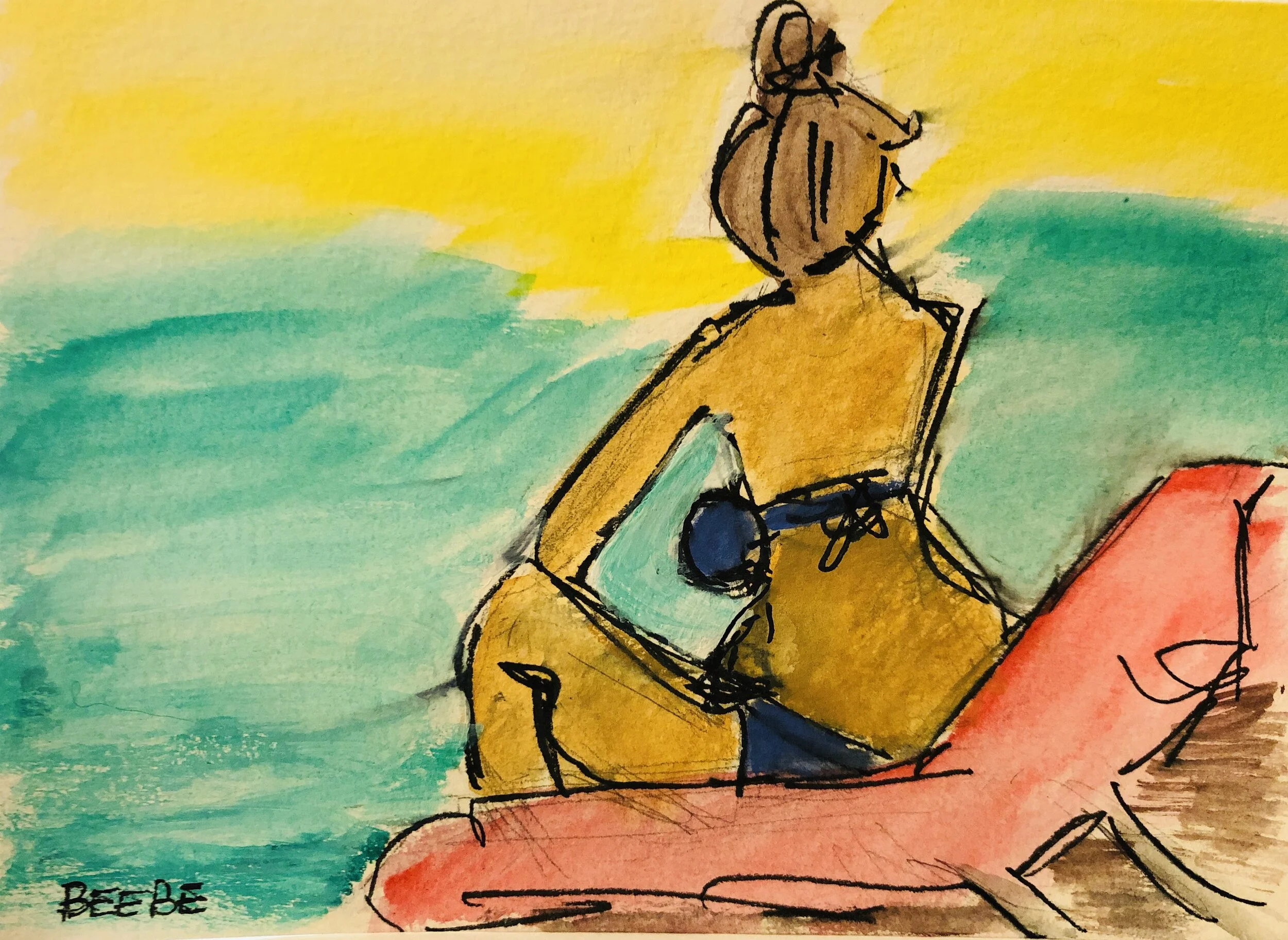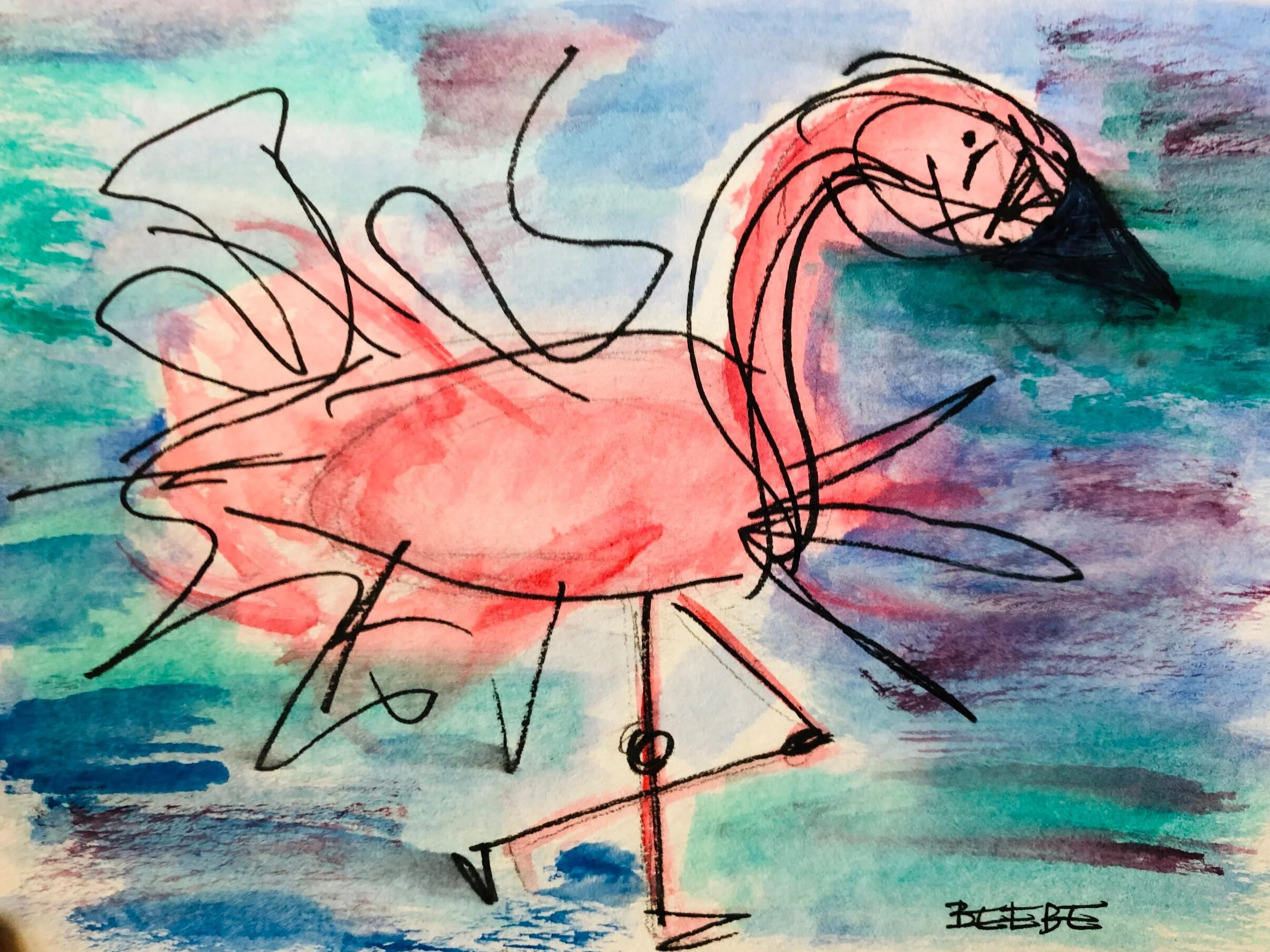The art of healing
I recently began painting with watercolors.
After suffering a concussion, reading and writing made me dizzy. Also, I had several fractures to my ribs and spine, so I wouldn’t be running or skiing anytime soon.
I needed something to do. Something that would bring me peace after the trauma of a hit-and-run accident on my scooter.
I couldn’t yet drive, so I hopped a ride to an art shop to meet a pal who paints.
The options were bewildering. But we managed to choose a small kit containing 12 half pans of basic colors. Also, an 8x8-inch pad of sturdy paper. And a box of plain white note cards and envelopes that were made to be painted on.
I also bought a mechanical pencil, a few brushes, and black felt-tip marker.
Back home, I filled a shallow dish with cool water. I opened the pad and laid out my supplies.
Painting, I imagined, would help me heal. I could kill time between naps and visits from friends. And on the cards, I would express my gratitude by creating images that had special meaning. A Buddha for the friend who sent the essential oils. Portraits of my dog—and other people’s dogs—for those who walked Ruby in the park. A girl at the beach. My happy and most healing place. I copied her from page 30 of a book I received as a gift.
After weeks of painting for other people, it finally occurred to me to make a flamingo—my muse. That’s when I knew the process was working.
But initially, I couldn’t get started. I was scared witless of the empty page. I’d never made art without words before.
So I started with the pencil. A tool I knew how to use.
Somehow, the produce-on-demand terror melted away. And I stumbled on a three-step process that captures my sincerity and joy.
And in that process, I saw a metaphor for how we make life.
I saw hope for the New Year.
Step 1: Lightly sketch. According to Stoic philosophy, our best chance for achieving a good life is to focus on what we can control. My accident was a clever setback —put in my path by the Stoic gods—but how I reacted to it was entirely up to me. So, as we look ahead to 2020 and beyond, I think we are best to sketch lightly. Our best-laid plans will be hijacked by obstacles we cannot foresee. As things change, we can erase our tentative lines and draw other ones. Wherever it leads, we can accept our path with equanimity.
Step 2: Splash with color. Our serene and confident sketches provide the anchor. But color creates mood and has profound effect. Once I let go of my specific need to know, I’m free to splash the page with pigment and wash. Whether getting dressed in the morning, creating a visual art, or painting nuanced pictures with our words, color does matter. Especially in 2020. In the year ahead, I hope that red and blue will still make purple. And that rainbows will never fade.
Step 3: Scribble. Over the pencil lines and the paint, I can commit to shape and form. Lines are a powerful tool. They give our art—and our lives—a sense of depth and structure. When we draw a line—continuous, broken, vertical, jagged, horizontal—we we commit to a direction. We put a limit on what we will or will not do. On what we will or won’t allow. The lines in my work are silly and loose. But they are intentional. And they are firm.
So, my friends, as we look ahead to 2020, may we draw one another out for honest conversation. May we give ourselves permission to feel blue when we’re lonely and red when something justifiable riles us up. May more of our fellows go green.
May we appreciate the lines in our faces and around our eyes. May we glow as we age, and grow ever wiser.
May we all make beautiful art.







